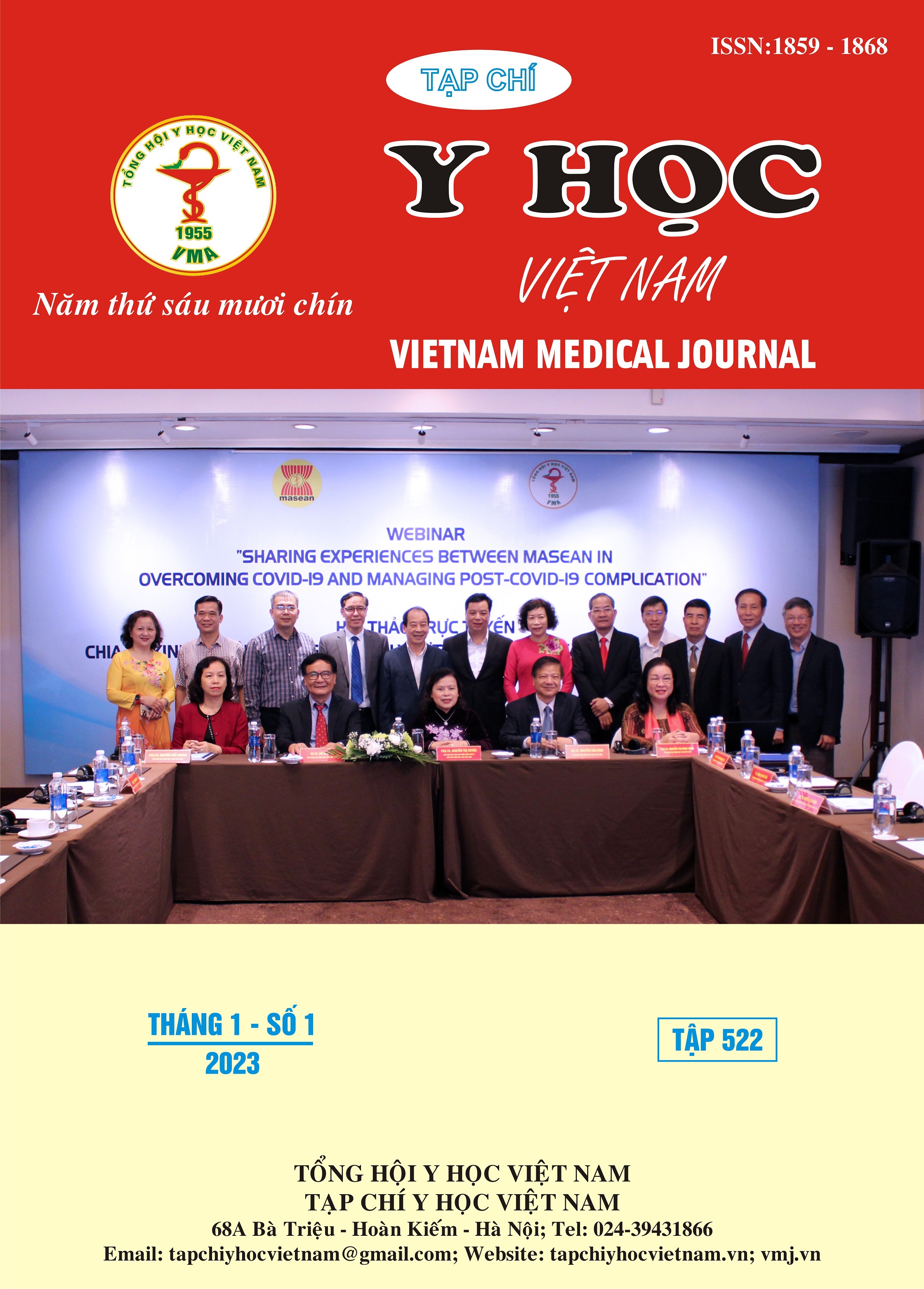ĐÁNH GIÁ KẾT QUẢ PHẪU THUẬT TREO CƠ TRÁN BẰNG CHỈ NYLON 3.0 PHỐI HỢP VỚI DÂY TREO SILICON TRONG ĐIỀU TRỊ SỤP MI
Nội dung chính của bài viết
Tóm tắt
Mục tiêu: Đánh giá kết quả phẫu thuật treo cơ trán bằng chỉ Nylon 3.0 phối hợp với dây treo Silicon trong điều trị sụp mi. Đối tượng và phương pháp nghiên cứu: 24 mắt sụp mi mức độ trung bình và nặng (MRD1 ≤ 1 mm); chức năng cơ nâng mi trung bình-kém (LF ≤ 5 mm); được phẫu thuật treo cơ trán sử dụng chỉ Nylon phối hợp với dây treo Silicon; tại bệnh viện Mắt trung ương từ tháng 7/2021 đến tháng 9/2022. Đánh giá kết quả phẫu thuật sau 1 tuần, 1 tháng, 3 tháng. Kết quả: Tuổi trung bình của đối tượng nghiên cứu là 20.21 ± 23.29 tuổi. Trong số 24 mắt được phẫu thuật, có 66.7% mắt sụp mi mức độ nặng và 33.3% sụp mi mức độ trung bình. Sau phẫu thuật 1 tuần, MRD1 tăng từ 0.13 ± 0.74 mm lên 3.46 ± 1.1 mm, MRD1 tiếp tục tăng nhẹ và ổn định sau 3 tháng là 3.75 ± 0.82mm. Độ cao khe mi trung bình tăng từ 4.96 ± 0.69 mm (trước điều trị) lên 8.63 ± 0.82 mm (sau điều trị 3 tháng). Tỷ lệ thành công về mặt thẩm mỹ đạt 87.5%. Kết luận: Treo cơ trán bằng chỉ Nylon 3.0 kết hợp với dây treo Silicon là phương pháp dễ thực hiện và đem lại hiệu quả cao cả về mặt chức năng lẫn thẩm mỹ trong phẫu thuật điều trị sụp mi.
Chi tiết bài viết
Từ khóa
Sụp mi, treo cơ trán, Nylon 3.0, Silicon.
Tài liệu tham khảo
2. Jones LT, Quickert MH, Wobig JL. The cure of ptosis by aponeurotic repair. Arch Ophthalmol. 1975;93(8):629-634.
3. Steinkogler FJ, Kuchar A, Huber E, Arocker-Mettinger E. Gore-Tex soft-tissue patch frontalis suspension technique in congenital ptosis and in blepharophimosis-ptosis syndrome. Plast Reconstr Surg. 1993;92(6):1057-1060.
4. Rizvi SAR, Gupta Y, Yousuf S. Evaluation of safety and efficacy of silicone rod in tarsofrontalis sling surgery for severe congenital ptosis. Ophthal Plast Reconstr Surg. 2014;30(1):11-14.
5. Etezad Razavi M, Khalifeh M, Yazdani A. Comparing open and closed techniques of frontalis suspension with silicone rod for the treatment congenital blepharoptosis. Orbit. 2014; 33(2):91-95.


